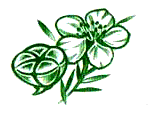FOREST FLOOR
Native
Bird Recovery Centre,
Whangarei
FROM PARADISE TO EXTINCTION
By Robert Webb
“It happened in almost the blink of an eye”
New Zealand once had some of the world’s most unique species but the arrival
of humans in this bird paradise was the beginning of the end of many species not
equipped to deal with either man or the many predators he introduced including
rats, cats, dogs and stoats.
One of the first birds to disappear in the late l9th century was the huge Moa,
which was easy prey.
Others came close: the takahe was rediscovered in l948 after not being seen for
four decades. The kakapo, now found on only four tiny islands, has
been named one of the world’s 20 most endangered species. Fewer than 2000
little spotted kiwis survive, the great spotted kiwi which lives in upland areas
of the South Island numbers around 20,000; the southern brown kiwi survive in
similar numbers on stoat-free Stewart Island. A century ago there were more than
5 million North Island brown kiwis: today there are just 30,000 and
numbers are shrinking by 6-10% a year. Almost all are located north
of a line between Dargaville and the Brynderwyns making Northland an important
part of the survival battle.
SO WHAT ARE WE DOING ABOUT IT?
The Native Bird Recovery Centre began as a dream by Robert Webb and friends to
provide a facility that could care for and protect the native birds.
The centre takes in all injured birds and where possible nurses them to health
for release back into the wild. Nearly 60% of endemic and native birds brought
here alive are successfully released again.
The centre has a number of incubators purchased with funds raised by local
community groups which can incubate eggs. The centre is very proud of its 98%
hatching success with kiwi eggs.
The number of birds being brought into the centre has doubled every year since
it opened in l994. We are handling close to l000 birds a year,
including kiwis, wood pigeons, moreporks, harrier hawks, albatrosses and a wide
range of common birds.
The centre’s policy is never to turn away a bird brought in, even if it
isn’t a native. We believe every bird has a role in the chain of
life and the future of native birds is inextricably linked into that chain.
The staff are all voluntary workers who give hours of their time because they
want to be part of the effort to ensure our remaining native bird species
survive. We rely on donations and gifts to meet the running costs, and feed for
the birds.
If you would like to help you can leave a donation at the centre or post to:
PO Box 10187,
Te Mai Post Office,
Whangarei
Page last updated: 05/04/02
